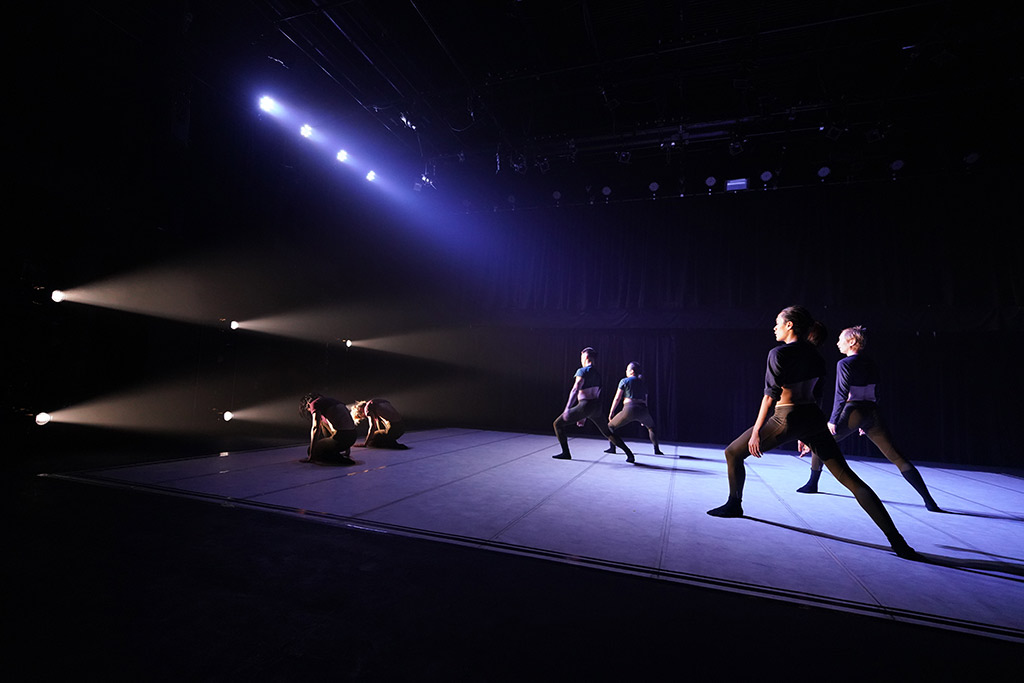Wet Room was a full-length dance work choreographed by Kenny Shim, that premiered in a double bill, titled Woman-On-Man-On-Men, in KLPAC from the 16th to the 19th of January 2020.
Woman-On-Man-On-Men was choreographed by Suhaili Micheline and myself. We aspired it to be accessible in both nature and style for audiences new to dance theatre.
Suhaili and I shared the same group of dancers. It was important to highlight each dancer’s background that ranged from physical theater to contemporary dance. This opened a plethora of possibilities where the exchange between choreographer and dancer was both personal and physical, adding a rare flavor that helped enhance the work. From the onset, it became clear that finding a unifying thread was the key to success in assimilating the dancers while allowing each dancer’s individuality to shine through. Words of inspiration began to emerge, playing an important role in connecting the dancers with the idea of the work such as “to reflect”, “to scribe” or to embody “water”.
“What does it mean to find your ‘cave time’?”
“What do you do in your ‘cave time’?”
“How does it feel for your personal time to be encroached on by others?”
“Express the difference when your quiet time is accompanied by someone you find interesting.”
Although commitment to the expression of ideas and thoughts through words was necessary, the dancers had to communicate them via movement. The dancers attempted to “scribe” their experience and thoughts with bodily interactions and non-verbal communication. The physical interaction and relationships built from tasks assigned culminated in movements that were infused with passion and a heightened sense of “care”. “Water” was later introduced to assemble the disparate parts, metaphorically and physically. Since water is commonly associated with healing, mediation, flow, thoughts, inspiration, and consists of a strong element of reflection, it became the core physical exploration of movement material that quickly became the central thrust of the dance. This led to the seamless weaving between dancers, the morphing of sculptured positions to improvised material, and the synchronization of movement .
Set within a “locker-room” scenario, the initial idea for Wet Room was centered around the masculine body in a confined environment, where the masculine body is forced to be present in a shared space, etching out interesting and peculiar intricacies between the bodies in space, thus forming relationships with one another. This naturally resulted in the exploration of the “Ego” within the masculine body. The magnetism and curiosity to discover the “other body” led to interactions that were soft and tender. The locker room quickly became a prominent metaphor—a place for self-reflection and the exploration of inner desires.
There is something about electronic sound that digs deep into the psyche of the mind, perhaps caused by the constant repetition of thumping beats. Using five of Jon Hopkins’s electronic tracks, music and movement converged in a synergistic contrast, adding another layer of narrative. As part of the process, the selected music was not used to generate movement material—the dancers executed their rehearsal tasks in silence. This helped each dancer to remain rooted in their own physical sensations and true to their thoughts.
Lighting designer Mohd Fairuz bin Mohd Ariff drew much inspiration from the movement and the music. Much of his design resembled a fashion show, with stark-white strobe lights and the layering of water tones. There were moments where strong beams of warm light gently caressed the dancers, metaphorically portraying them as having their shower while reflecting in thoughts and memory. The dance space itself was traced out with four stripes of thin white light, forming a square box. This provided a clear dancing space as the dancers never truly left the stage for the entirety of the work. The confined and intimate space led to voyeurism becoming an important element, further reflecting one’s experience in a locker room. The allure, and possibly also the repulsion of the human body, was made evident by how each character viewed one another.
The movement that was actualized was filled with curiosity, tenderness, and softness, rarely displayed by the masculine body. To further heighten the femininity within the body, the dancers each wore a crop top with military green tights. The juxtaposition of the tights and the top allowed a disassociation of the “now”, transporting the viewers to a place of the future. This was intentional, with the aim to shift society’s current perception of masculinity in men. The fluidity of water supported the idea of constant change, including the shifts between masculinity and femininity within oneself.
Set in a male locker room, Wet Room explored the fundamental essence of being a male, where innate desires lead to powerful relationships. The work also showcased the physical manifestation of the male ego “stripped naked” when the body finds solitude in quiet places, allowing each character to express sensitivity, power, speed, tenderness, and softness.




Featured photo: [Left to right] Tristen ZiJuin, Lu Wit Chin, Joshua Gui, Ng Yann Chwen, Pengiran Khairul Qayyum Ag Omar, Steve Goh in Wet Room at the Kuala Lumpur Performing Arts Centre, January 2020. © Ariff Aris
